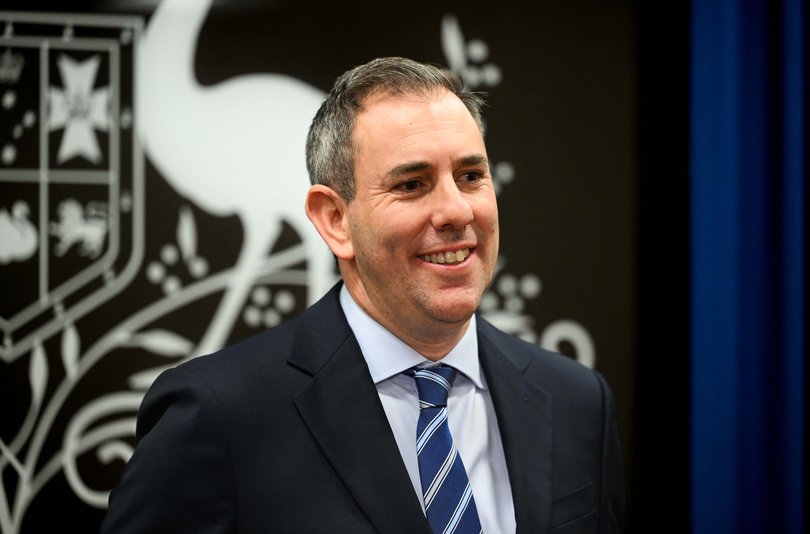GST needs overhaul for first time since launch 25 years ago, economists say

Economists are calling for the Government to mark the 25th anniversary of the GST by embarking on bold and ambitious reform to overhaul the tax, including by increasing the rate and broadening the base, in order to meet the public spending needs of the next 25 years.
The goods and services tax rate has remained steady at 10 per cent since it came into effect on July 1, 2000, and despite some adjustments to what has been subject to the impost, it has broadly remained unchanged.
Australia’s GST rate is well below the OECD average of 19.3 per cent, and experts say it accounts for only 12.5 per cent of total taxation revenue, well below the OECD average of 20.75 per cent.
Sign up to The Nightly's newsletters.
Get the first look at the digital newspaper, curated daily stories and breaking headlines delivered to your inbox.
By continuing you agree to our Terms and Privacy Policy.The GST also now only covers about 50 per cent of total consumer spending — a decrease from what it covered at its inception. It’s also lower than the OECD average of 58 per cent and almost half of New Zealand’s 95 per cent.
With Treasurer Jim Chalmers pledging to keep everything on the table at his upcoming roundtable, including reforms to the GST, the country’s peak accounting body says a substantive revamp is necessary to alleviate the Government’s over-reliance on personal income tax.
Popular ideas among pro-reformists are to increase the GST to 15 per cent, and for the tax to be broadened to cover private health insurance premiums, private school fees, and fresh foods. After compensating lower incomes, doing so could deliver a revenue boost of a net $50 billion.
Outlining a five-step plan to roll out over two years, CPA chief executive Chris Freeland said it was time for a “grown-up conversation about Australia’s tax system and the GST’s structural weaknesses”.
“For the past quarter of a century, the GST has remained virtually unchanged, and its inconsistencies and design flaws — such as taxing some foodstuffs and not others — have been ignored,” he said.
“GST belongs at the heart of any discussion of tax reform. Most tax specialists believe that increasing the GST is the key to broadening the overall tax base. Reducing the reliance on personal income tax would put more money in people’s pockets and ultimately generate more revenue to drive economic growth.

“Milestone dates aside, this is now the time to develop a step-by-step approach to deliver once-in-a-generation reform of the tax system.”
RMIT taxation expert Venkat Narayanan has suggested an incremental increase in the GST over a period of time.
“There is no reason why we shouldn’t be talking about increasing this gradually and over a period of time. Why not talk about a 10.5 per cent GST for the next few years and increase it by 0.5 per cent until we get to 15 per cent, rather than just straight to a higher percentage,” he said.
Pradeep Phillip, lead partner for Deloitte Access Economics, said one option could be keeping the 10 per cent revenue that went to the States, while an additional five per cent could be collected as Commonwealth revenue.
“Australia can’t maintain the current and future level of spending and investment needed based on a tax-to-GDP ratio of 20, 30 years ago,” he told The Nightly.
He said the efficiency of the GST meant through reforms, revenue could be raised to meet the needs of the present and future, adding that it needed to be part of a much broader tax reform package.
Independent economist Saul Eslake said he would like to see the GST increased and the base broadened, but also said it needed to be part of a broader, comprehensive tax reform that decreases reliance on income tax and ensures Government spending can keep up with public expectations.
Doing so, he said, would rely on the Treasurer “breaking the nexus between revenue from the GST and the payments to the States”.
“A big problem has to be overcome, and that is that no Federal Government would consider copping the political odium of raising the GST and broadening the base, and bearing the financial burden of compensating up to a third of the population for its impact on them, while the States get to spend it,” he told The Nightly.
He said the way the system currently works, with revenue flowing to the States, should be completely unpicked, in favour of a return to the pre-1992 Loan Council approach, where the Commonwealth Government exercises some control over State spending and borrowing.
Getting the States on board would be a political headache, but it could also resolve the ongoing bickering over the GST carve-up, which has intensified since Scott Morrison introduced the “no worse off” payments.
A fresh war of words erupted this week after the Queensland Treasurer demanded the system no longer “compensate States for any economic or financial mismanagement”, a shot aimed at Victoria. He accused his southern counterpart of receiving $800 million out of Queensland’s GST share to reimburse “Covid-19 failures, five years after the fact”.
Victorian Premier Jacinta Allan refuted David Janetzki’s claims as “bullshit”.
Over the past decade, Queensland’s share of GST has increased by 28 per cent since the 2015-16 financial year, compared to a 58 per cent increase in NSW, a 118 per cent increase in Victoria, and a 317 per cent rise in WA.
Dr Philip said the argy bargy was a “symptom of the broader rethink needed of federation roles and responsibilities” and revenue sharing arrangements.
“GST reform is not the silver bullet, and Commonwealth, State and Territory relations are a really important part of the tax reform conversation,” he said.
On a macro scale, Mr Eslake said increasing the GST would potentially be regressive, meaning lower-income earners would spend a greater proportion of their income on GST than those on high incomes. Mr Eslake suggested to address that the Government compensate those earners, either by raising pensions and benefits or by lowering the tax rate.
Dr Chalmers has long maintained it would be difficult to “adequately compensate people”.
He said those income earners would be less impacted by a base broadening. But to “sell” both reforms, it would be sensible to make “progressive” reforms to the income tax system, such as by increasing taxes on non-wage and salary income or making changes to the top tax threshold.
“A progressive reform to the income tax system would help you sell by broadening the base of the GST,” he said, suggesting expanding the tax to cover private education, health and fresh foods.
Dr Chalmers has said a precondition for considering changes to the GST would be that the package is at least revenue neutral and in the national interest, and noted that there is, from “time to time, tension between the Commonwealth and the States about Commonwealth funding”.
“I hope that at the economic reform roundtable, however, we work out the best way to involve the States in this process, whether inside or outside the room, I hope that people come to this in a constructive way, and I suspect they will,” he said last week.

